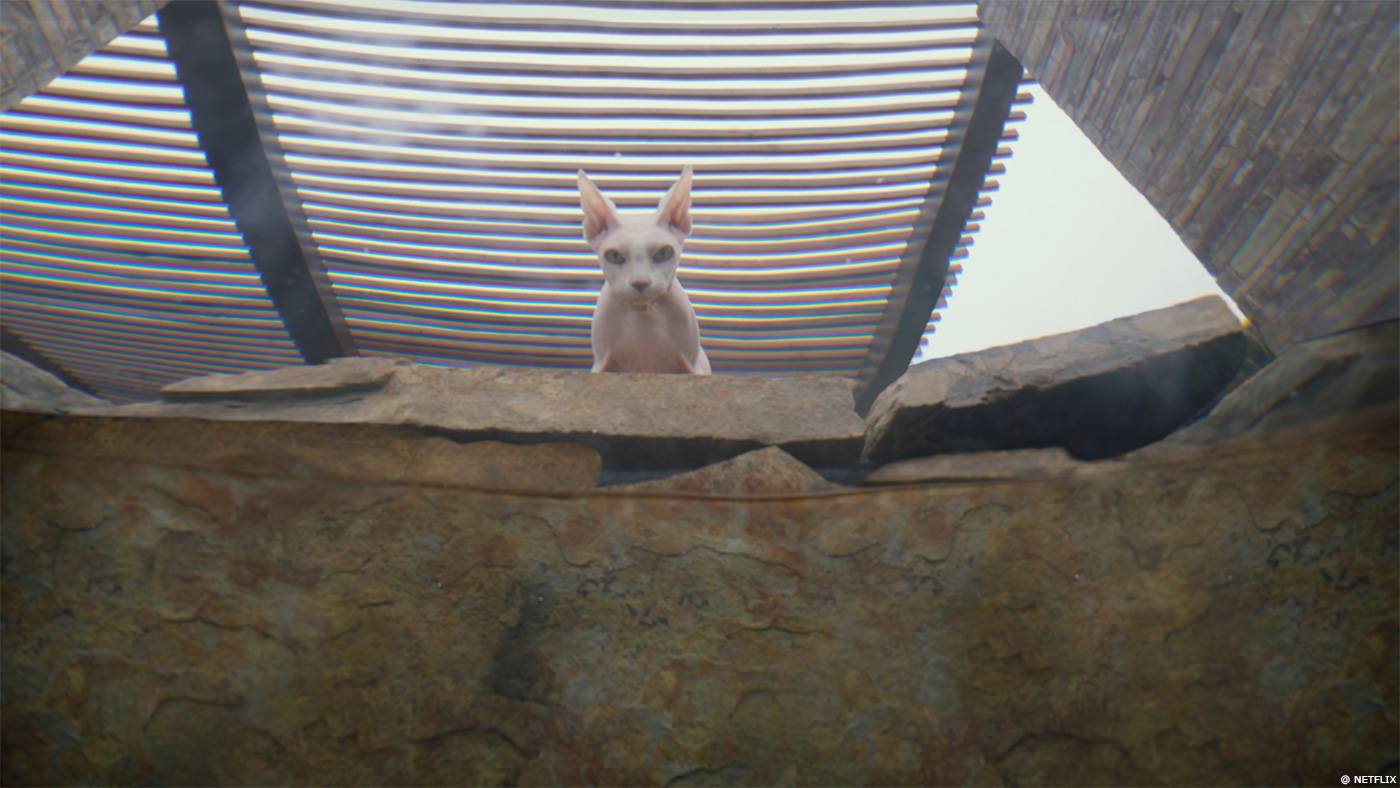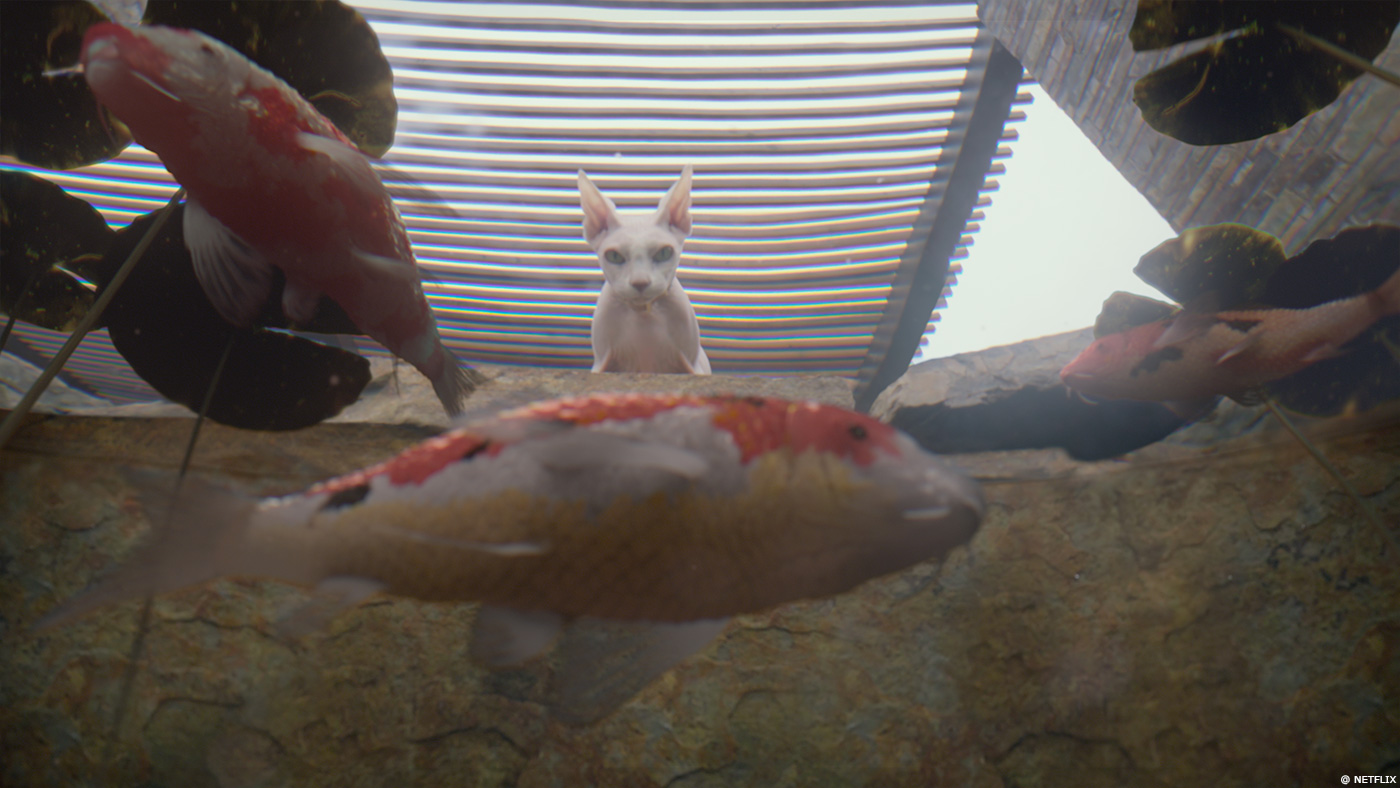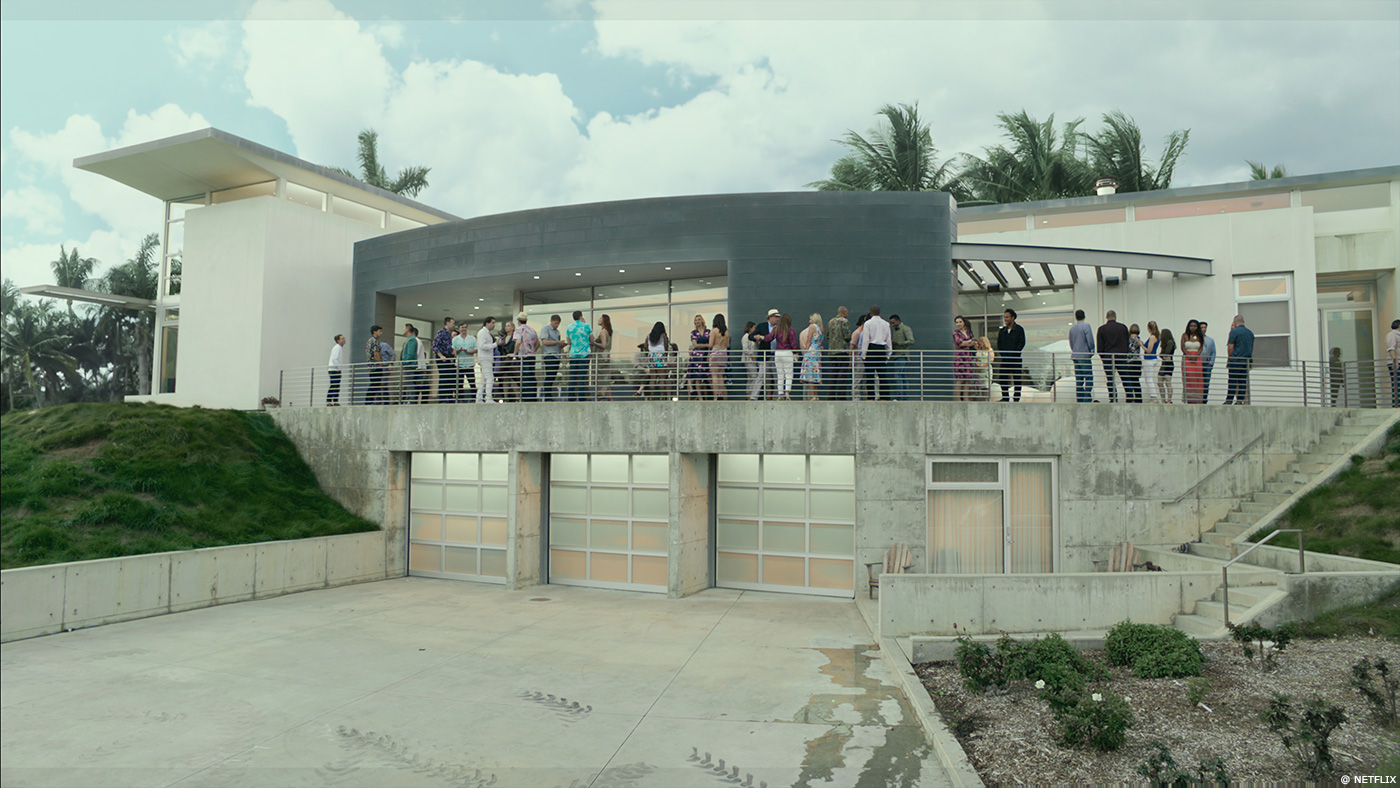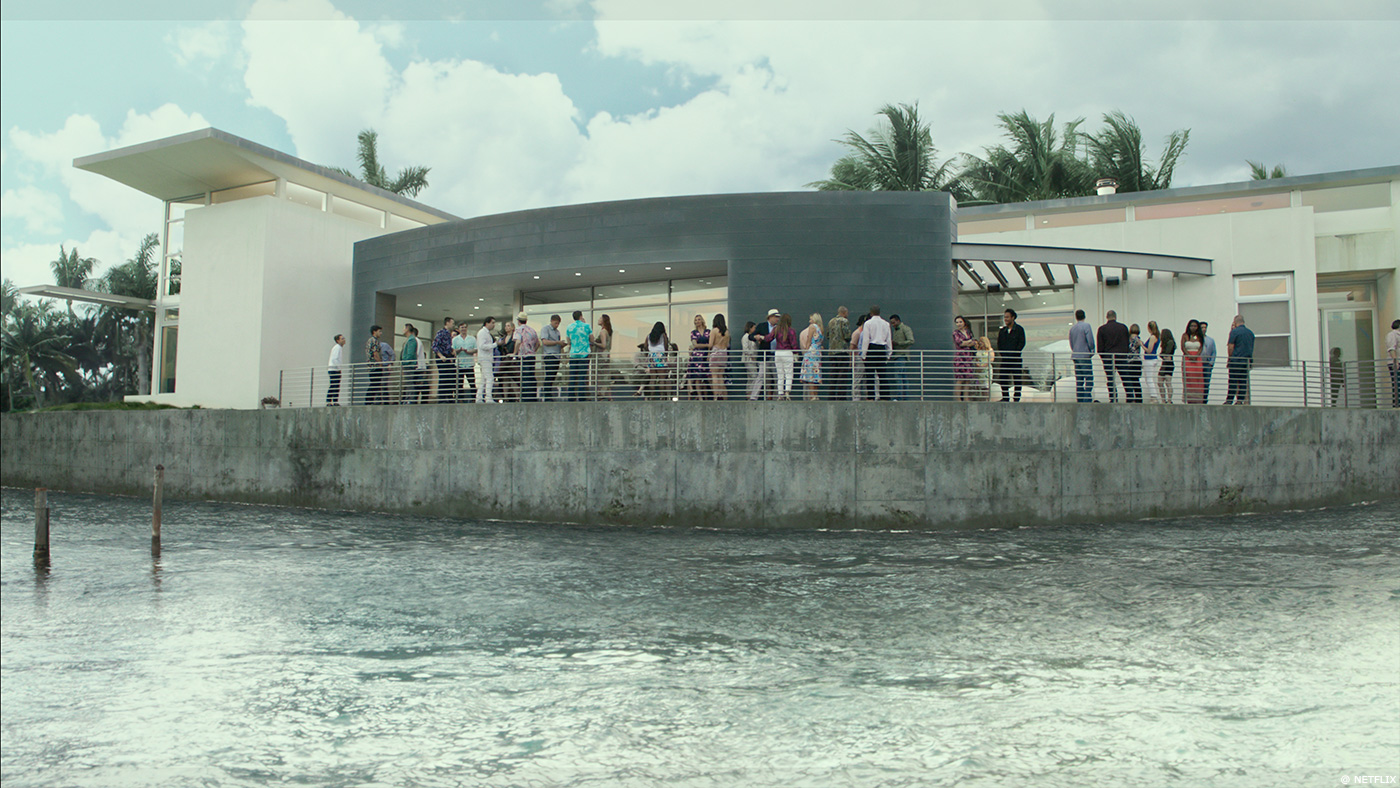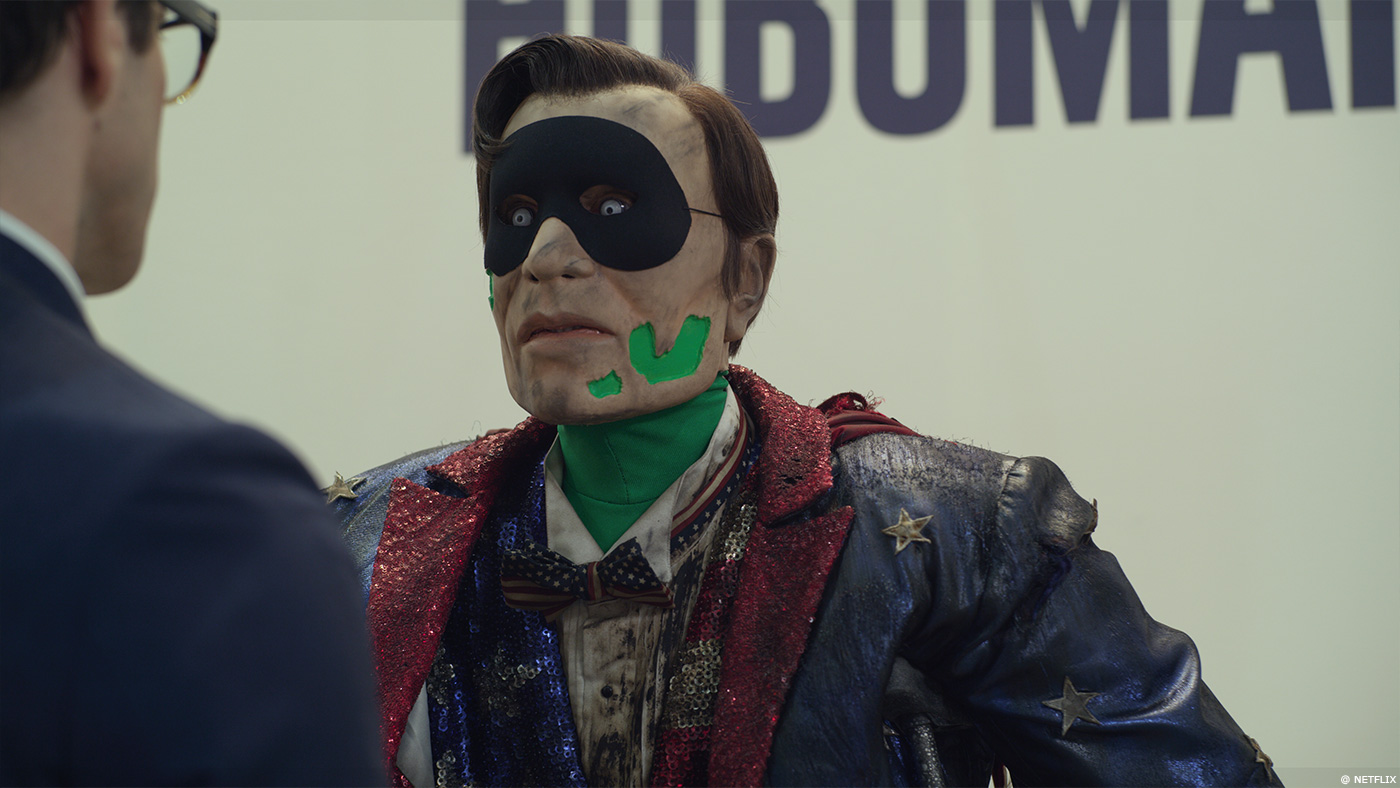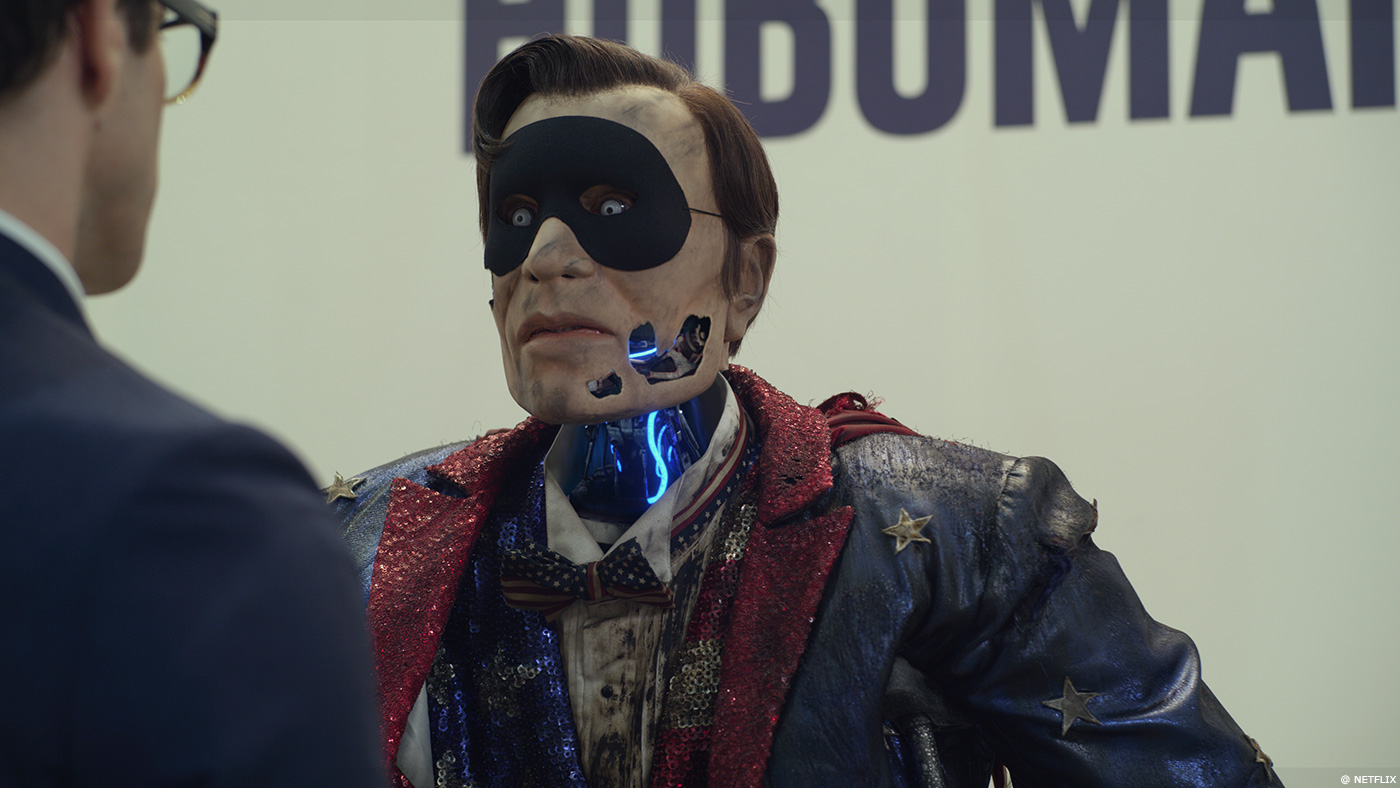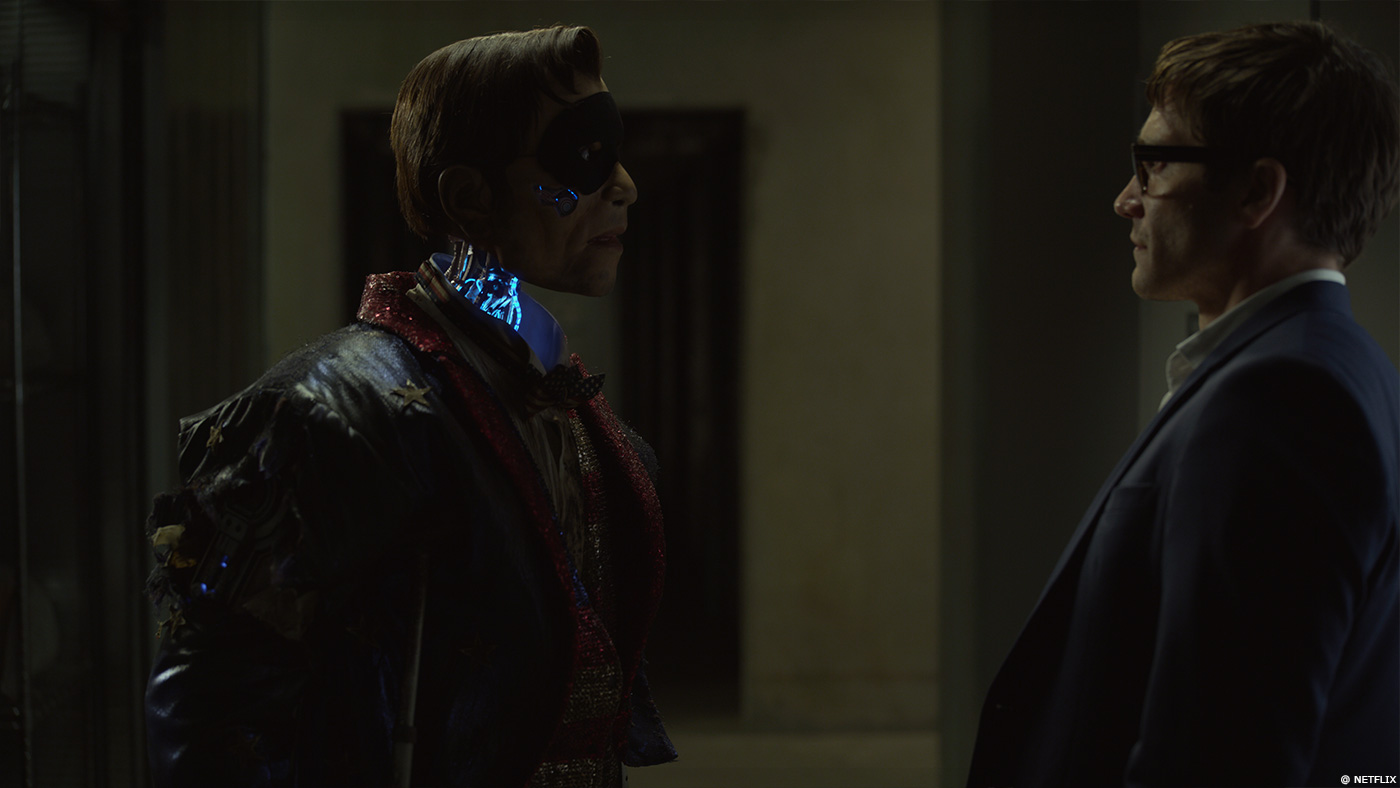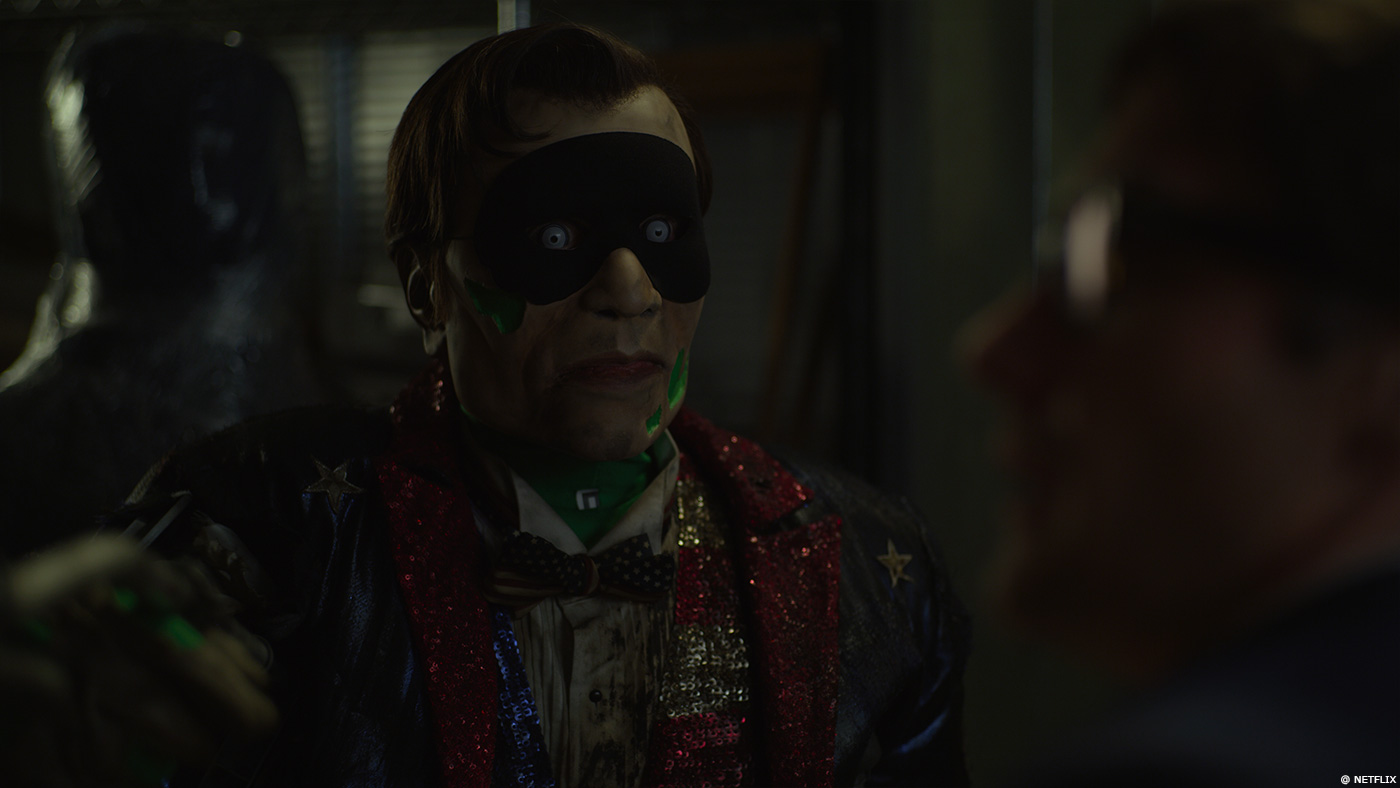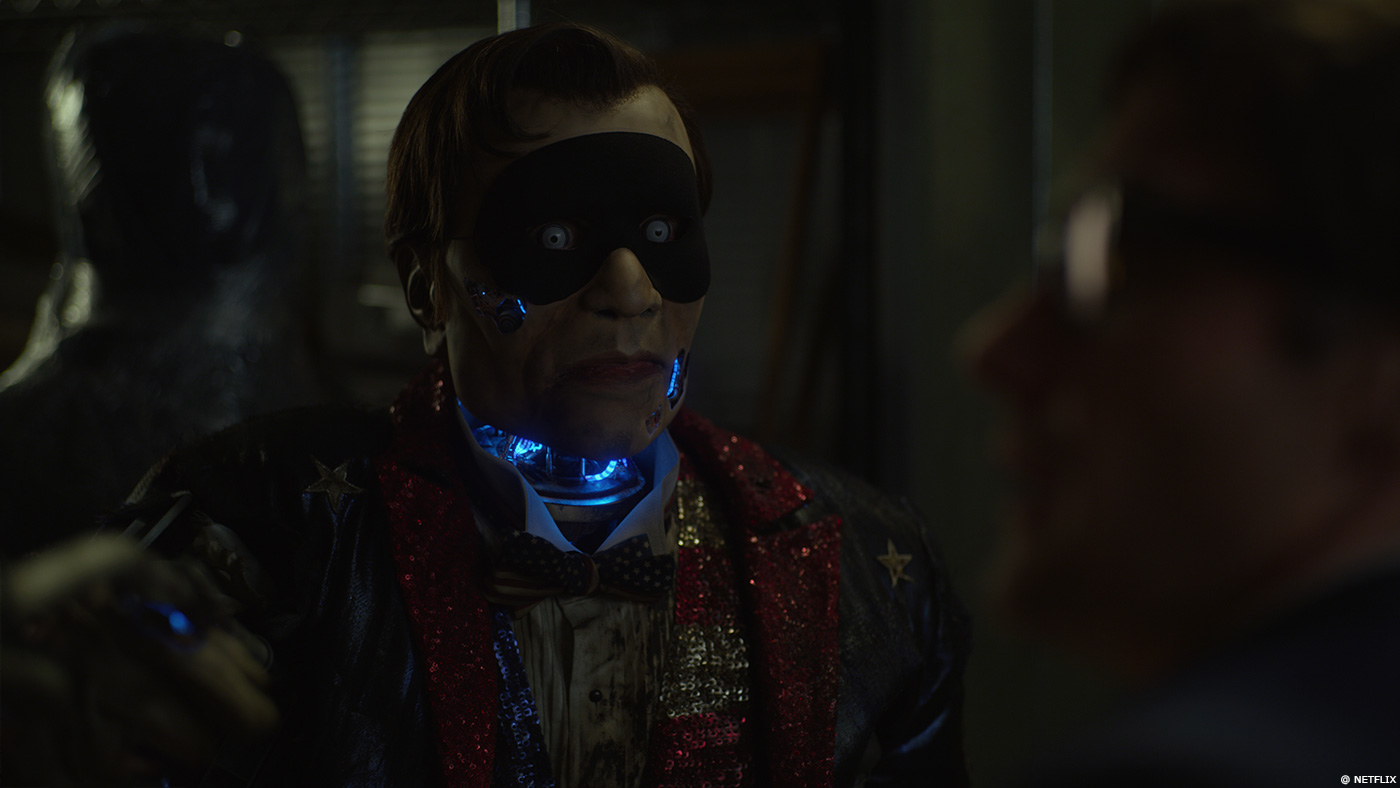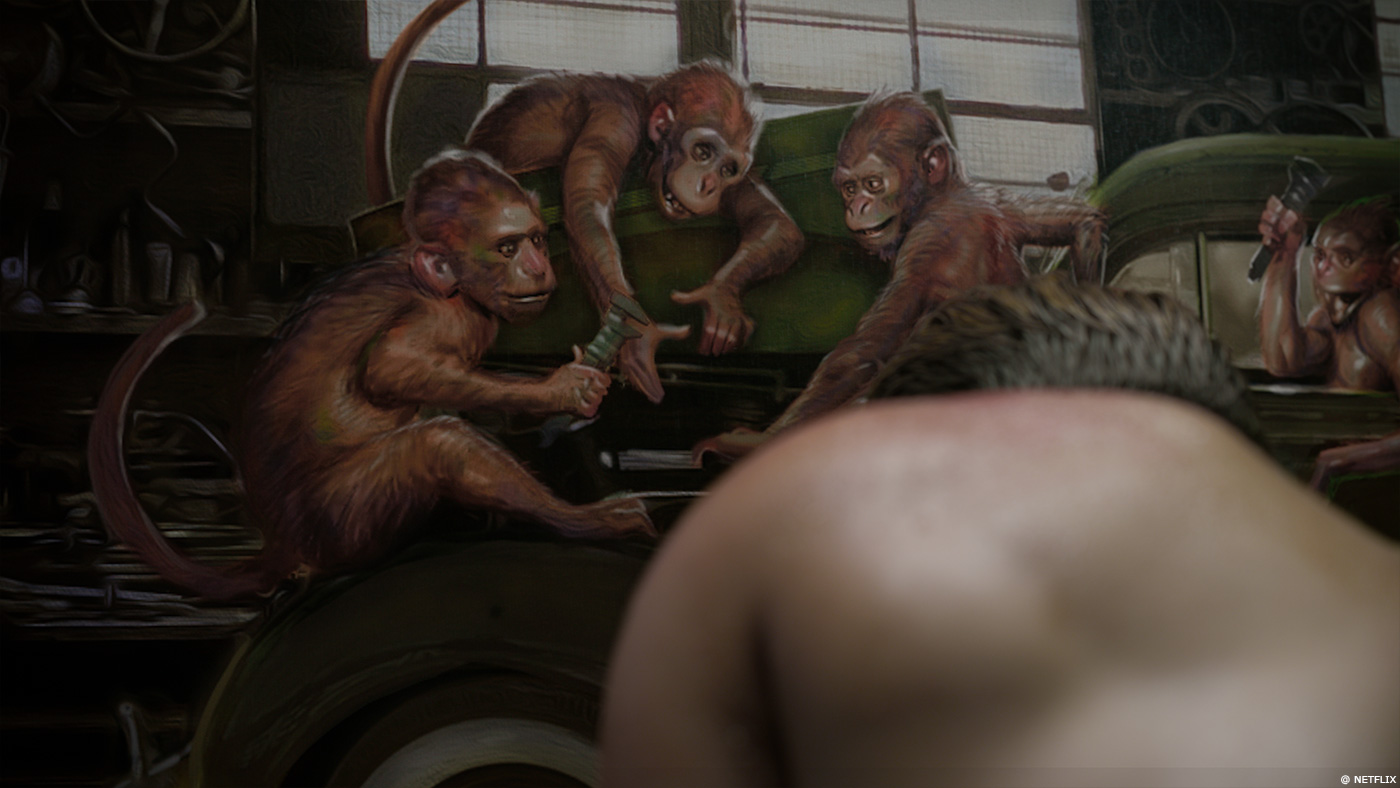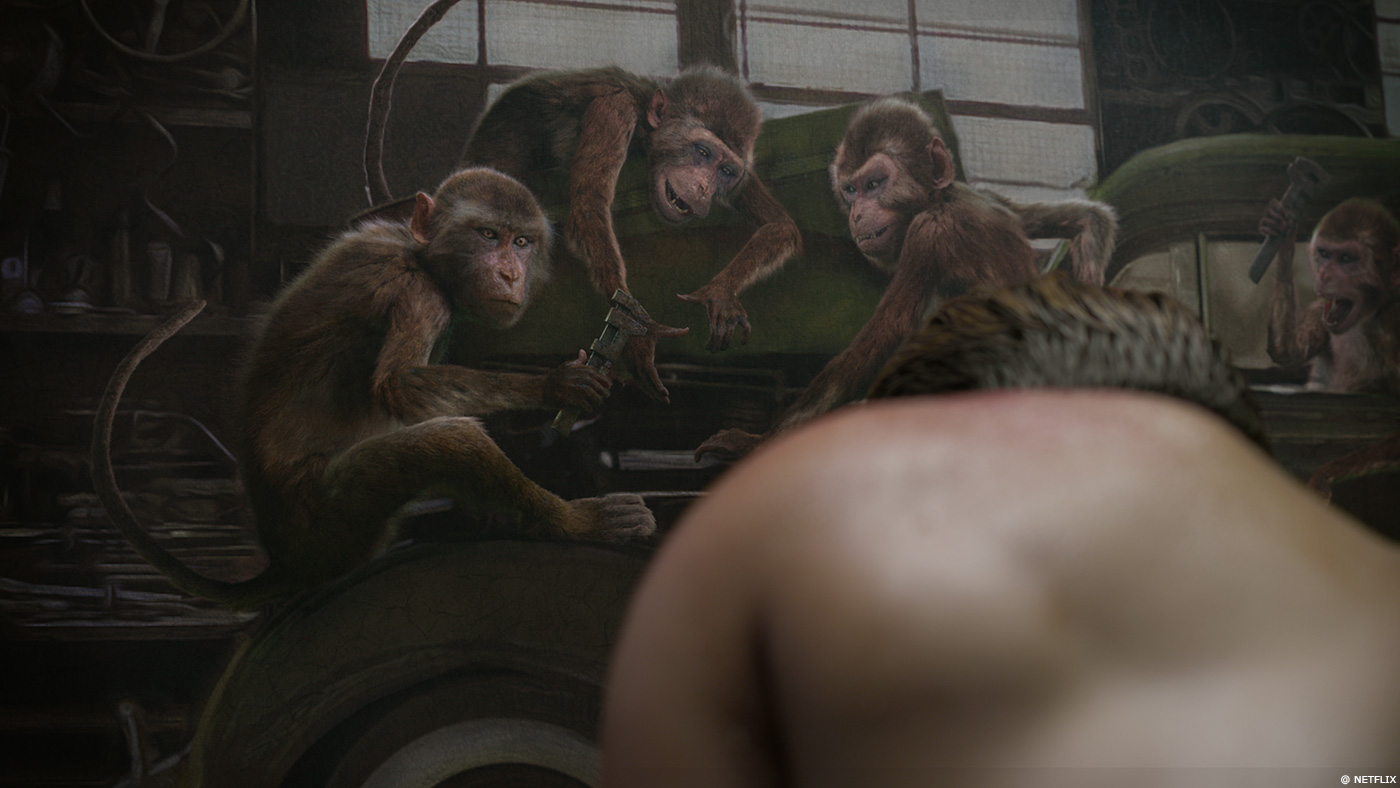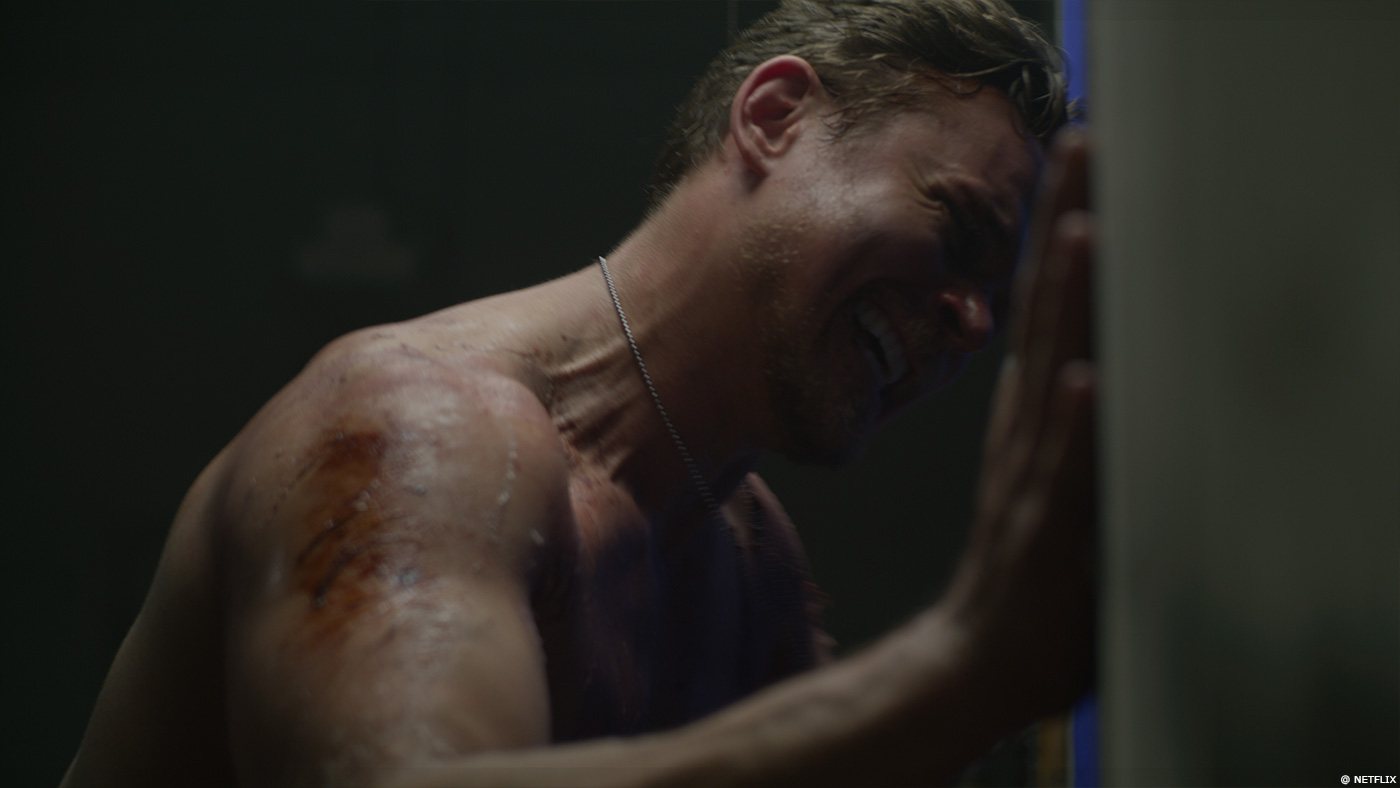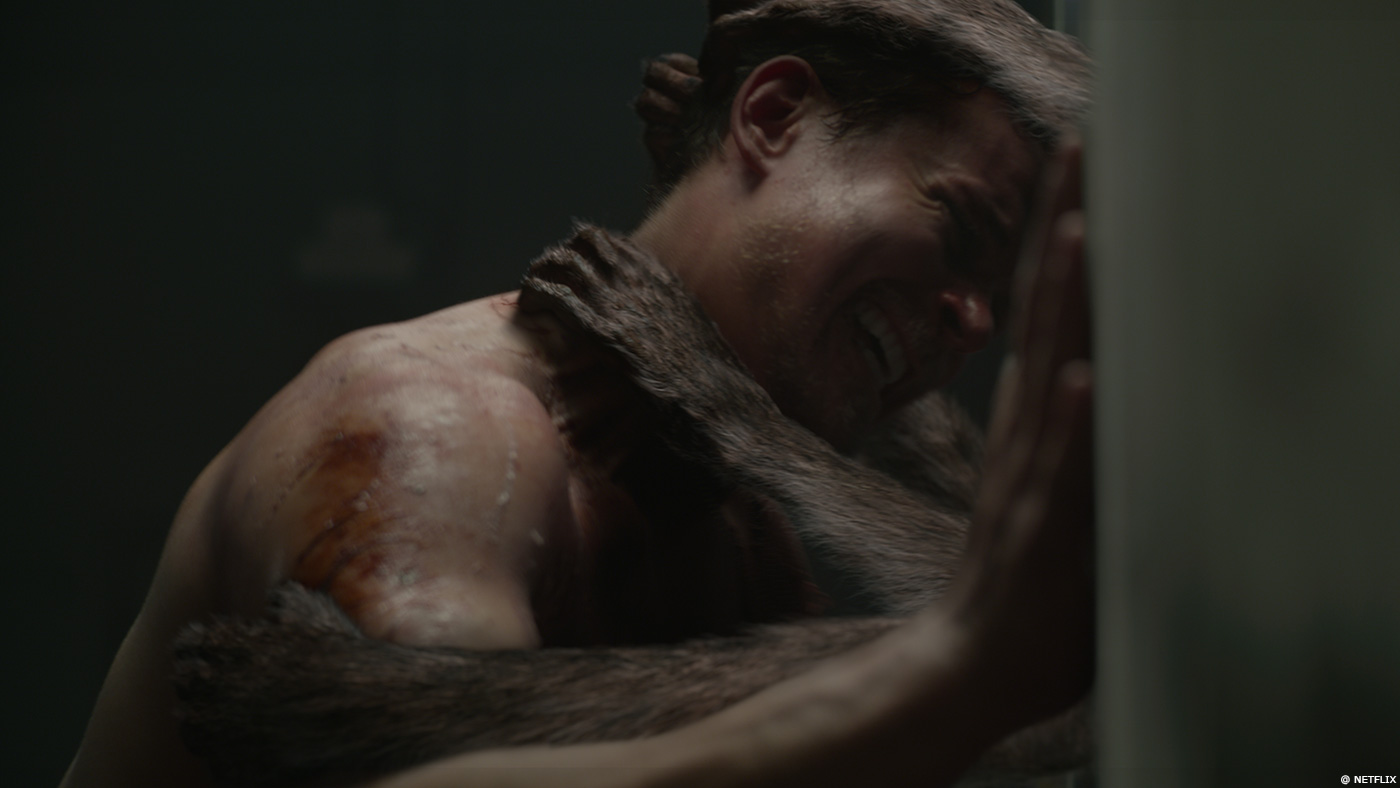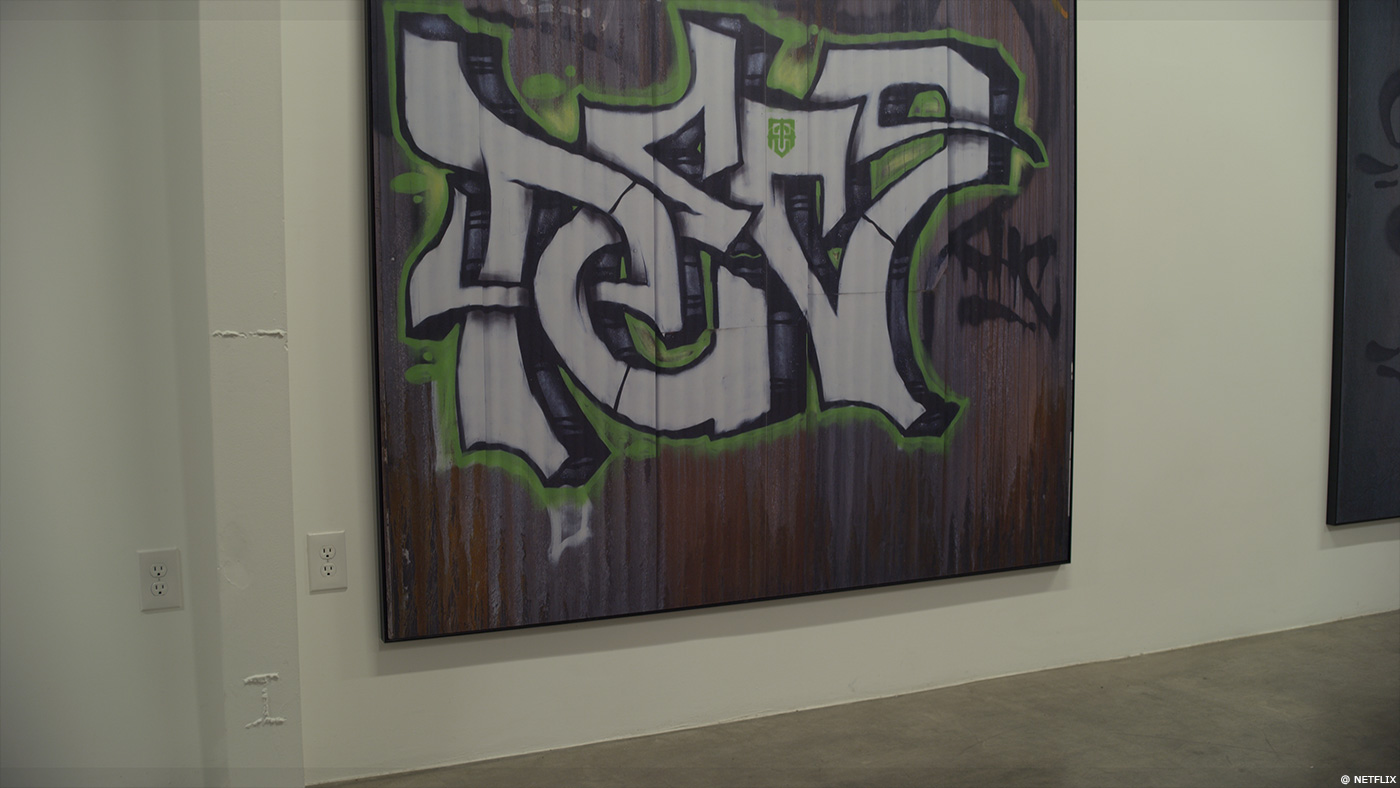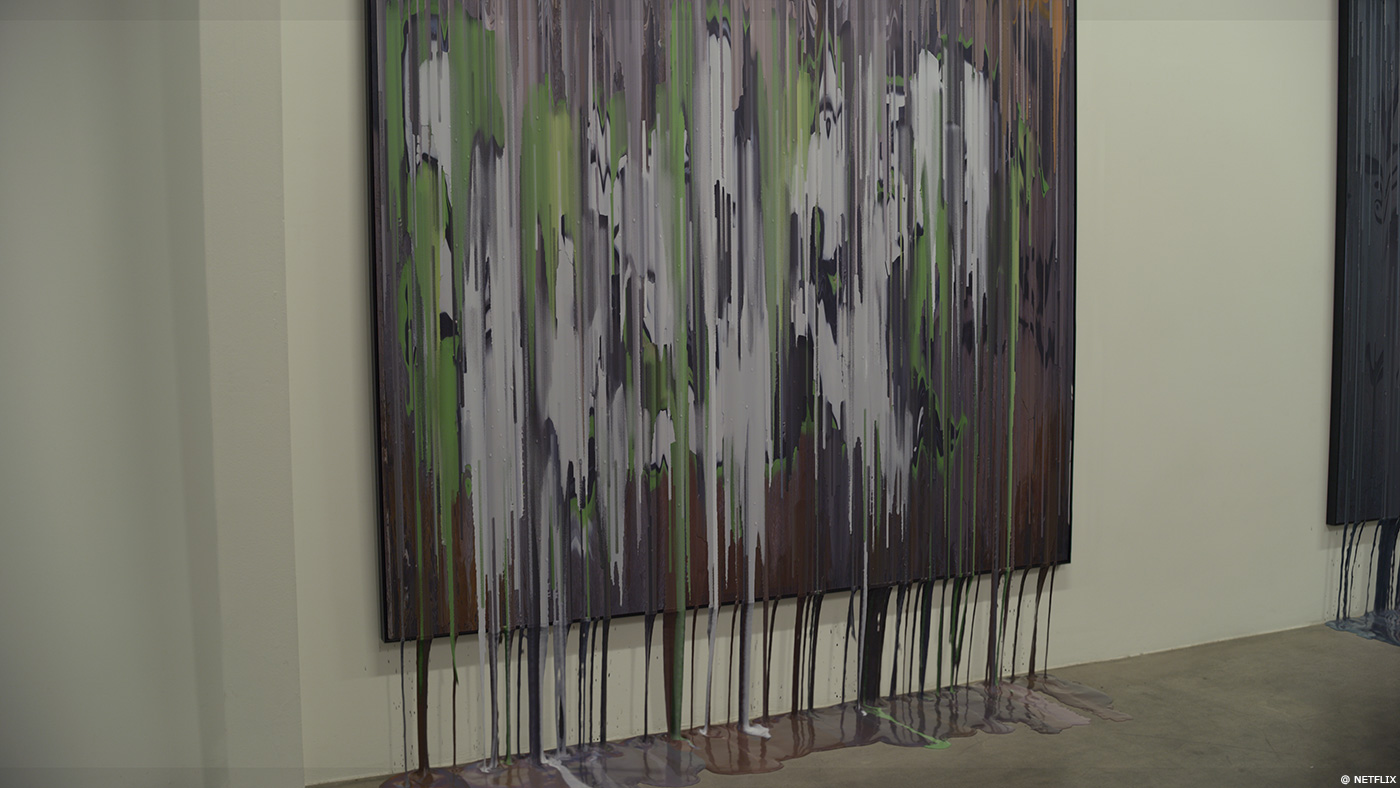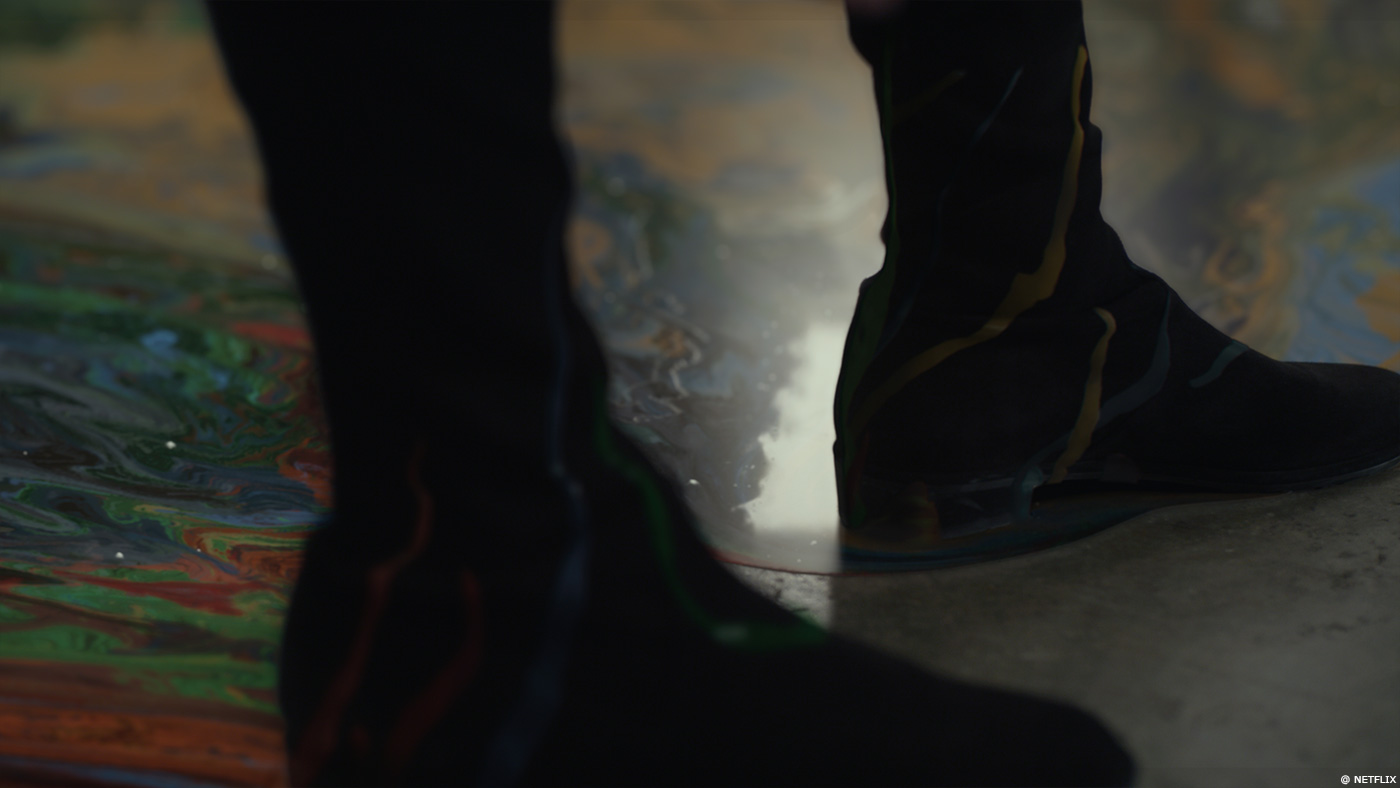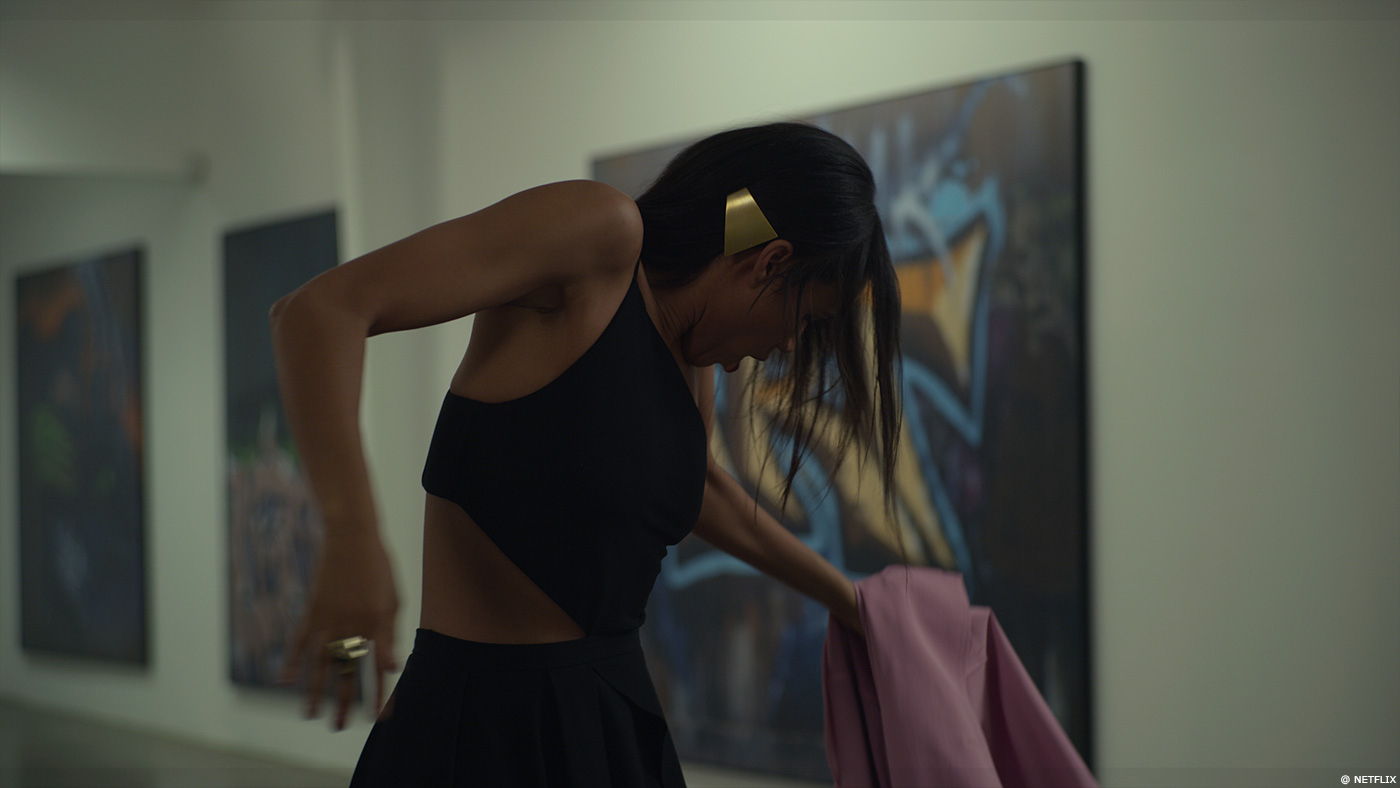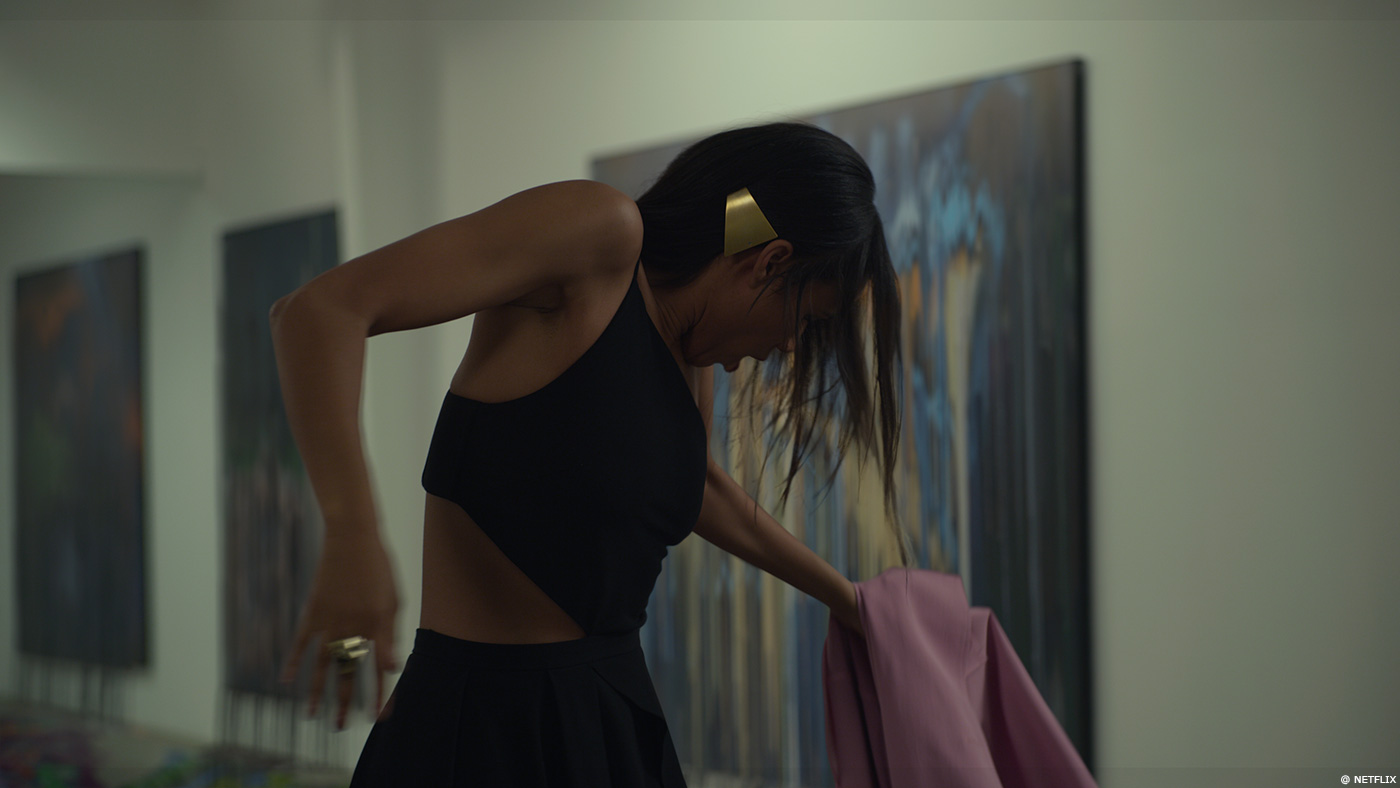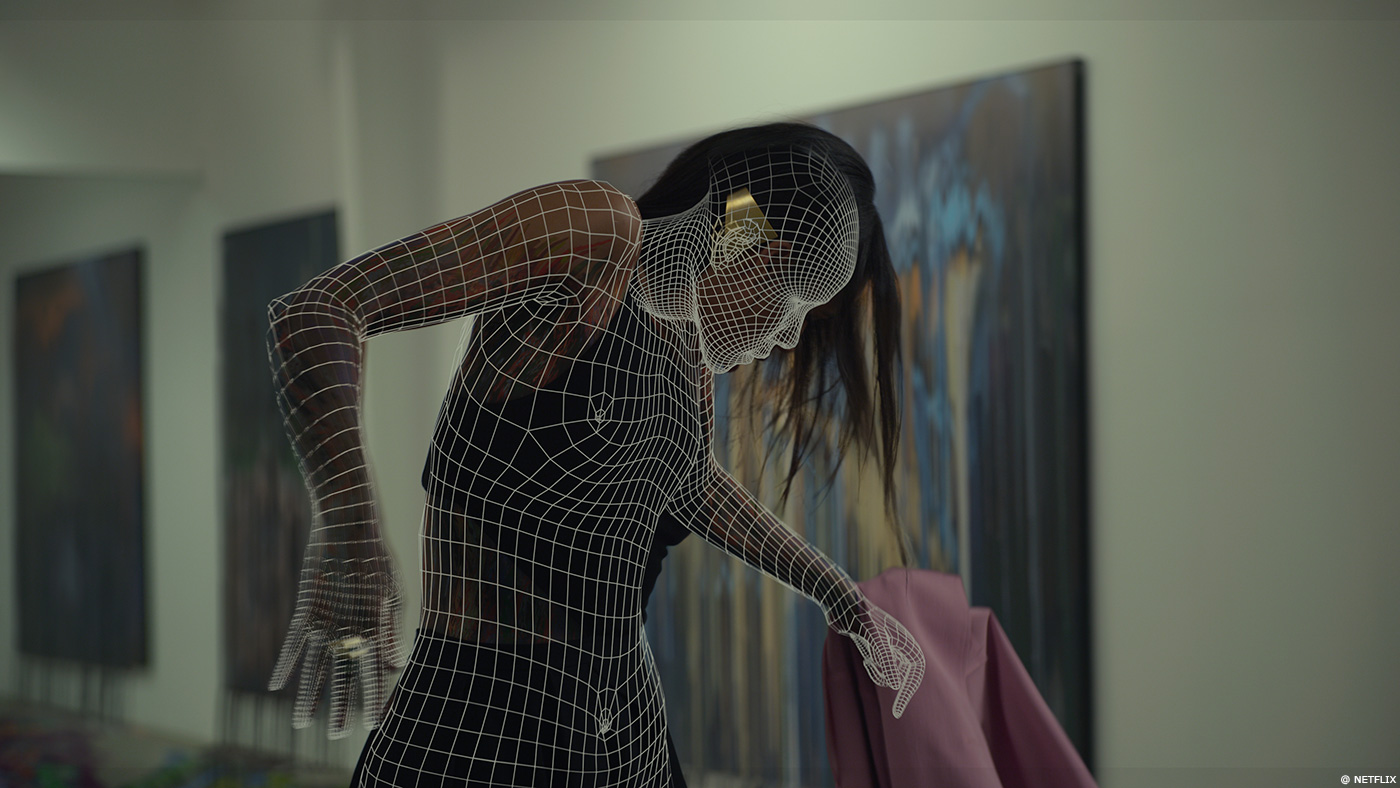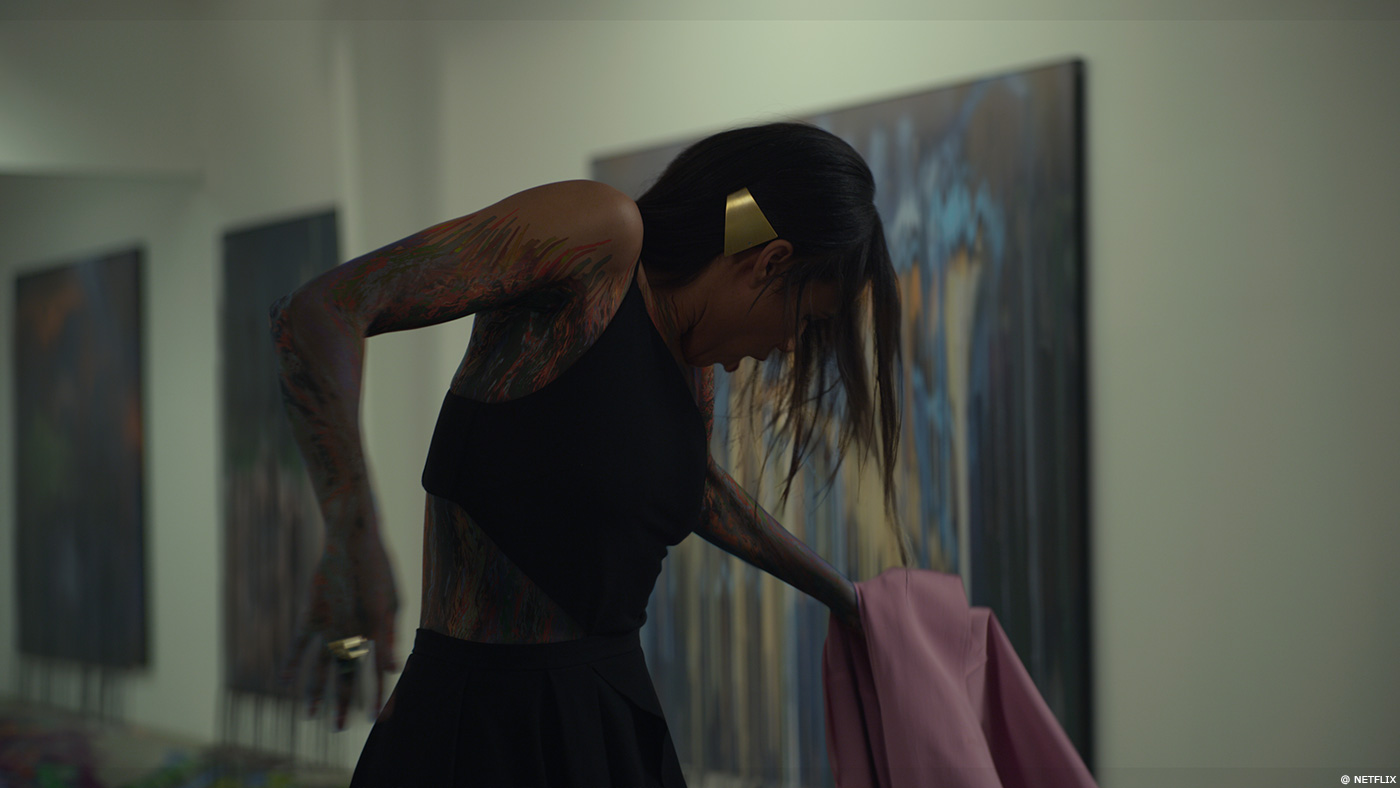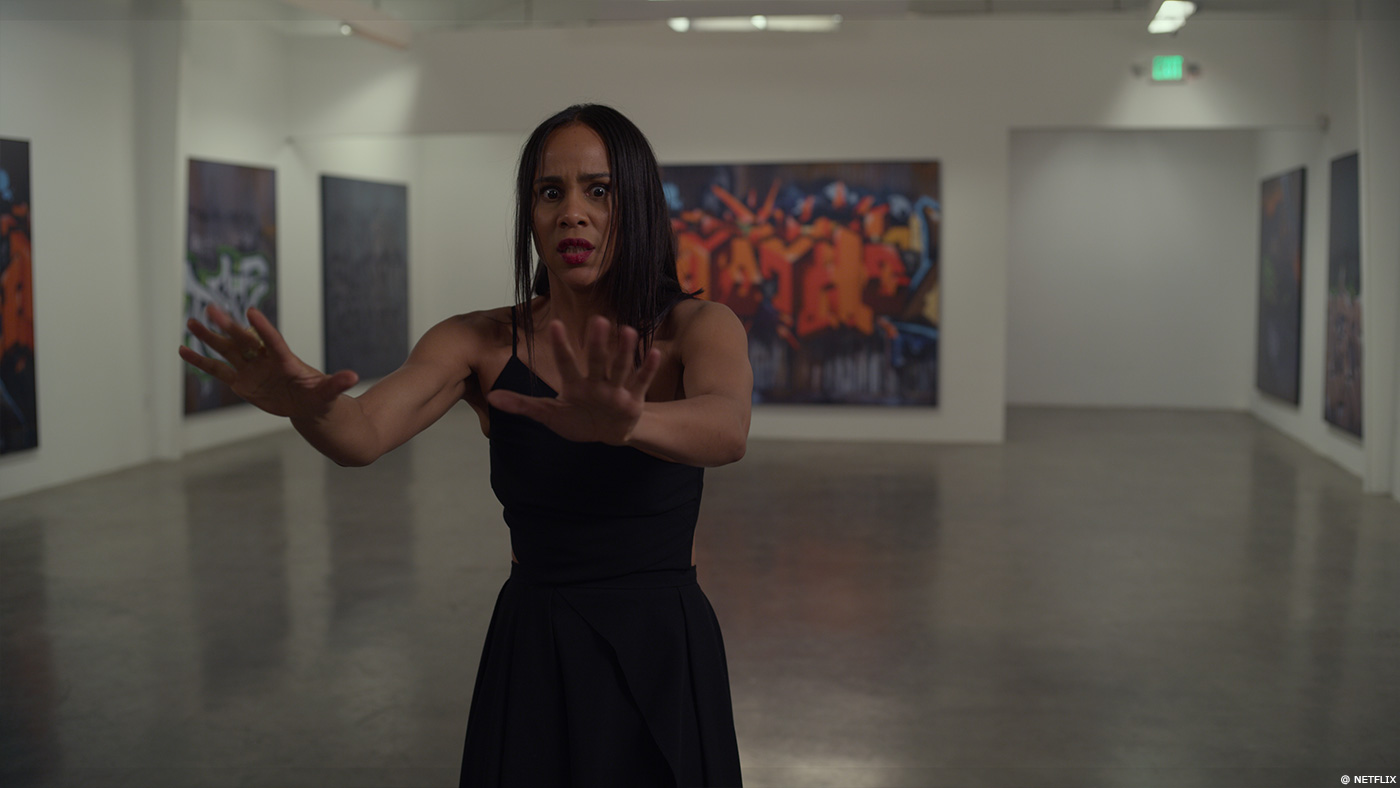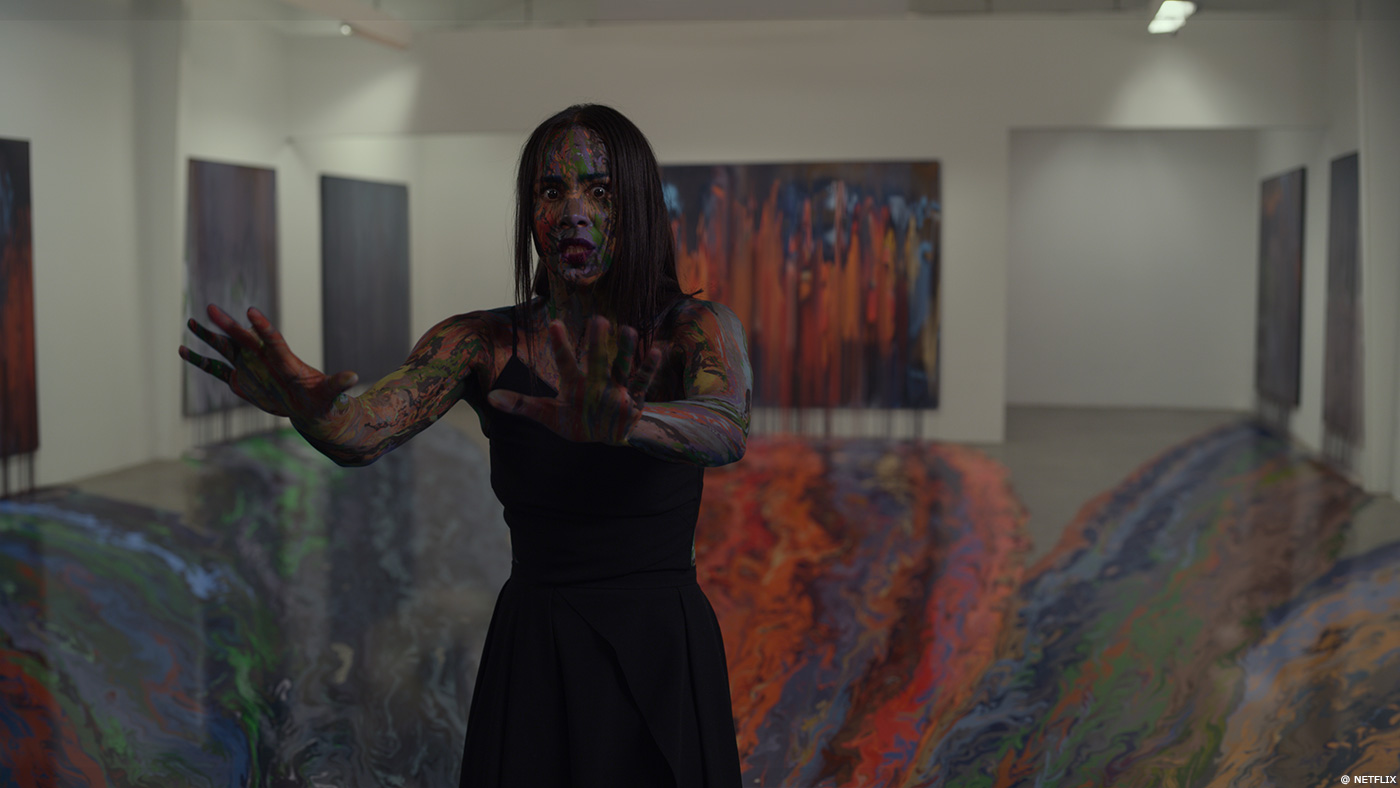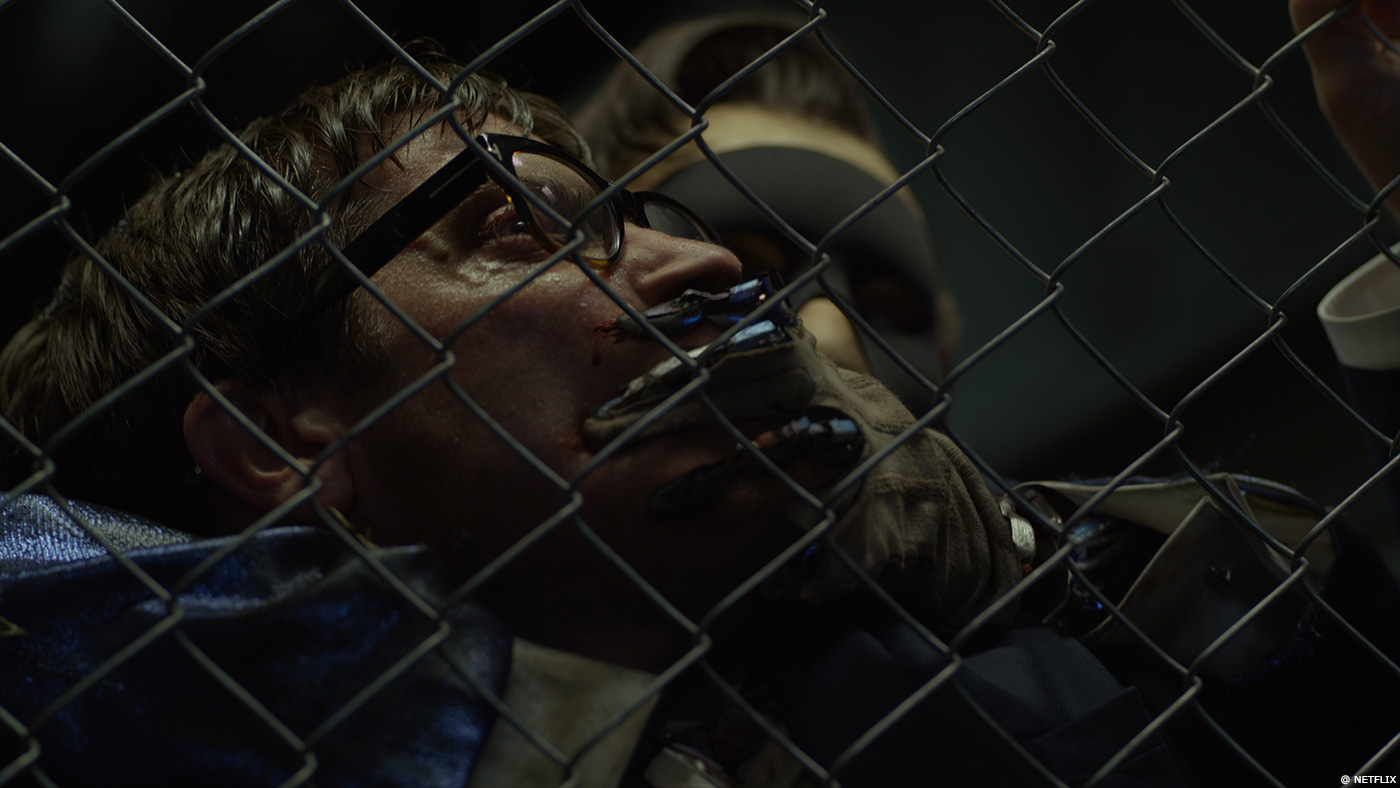Aidan Fraser began his career in the visual effects in the early 2000s. He worked in many studios like Industrial Light & Magic, Weta Digital, Laika and joined Atomic Fiction (now Method Studios) in 2013. He worked on many movies such as KING KONG, IRON MAN 2, THE WALK and STAR TREK BEYOND.
What is your background?
I started in the industry at ILM in 2003 and joined Atomic Fiction (now Method) in 2013.
How did you and Method Studios get involved on this show?
We were originally contracted to do previs for several scenes. Once shooting started we were brought on as the primary vendor.
How was the collaboration with director Dan Gilroy and VFX Supervisor David Feinsilber?
Both Dan and David were very collaborative and open. Dan values input from his key creatives to help define the look of the film and it was great talking to him about how we were going to approach the dripping paint. I worked closely with David on set and in post on all of the creative work; this project was one of the best client collaborations I’ve had and I felt like we were really in sync.
What are the sequences made by Method Studios?
We handled almost all the VFX in the film, including the sequence where a gallery of graffiti swallows art assistant Josephine (Zawe Ashton) into a swirl of paint, with the wall art becoming a crawling tattoo on her skin; the photoreal monkeys; character design and creation of the robotic Hoboman sculpture; environments and set extensions (we turned the LA Convention Center into an art gallery and an LA home into a waterfront Miami mansion); a CG koi pond; and bringing The “Velvet Buzzsaw” tattoo to life.
Can you explain in detail about the environment creation and especially the one close to the river?
The Miami waterfront house was all done as 2.5D matte painting. The mansion was filmed in the hills north of LA with greenscreen outside all of the windows. We created the environment around the house by piecing together various plates we shot in Miami, including water, boats, and swaying palm trees.
Can you explain in detail about the creation of the Hoboman?
We were basically designing a robot that looks like Uncle Sam as a homeless guy. I think I told the asset team to make it look like someone threw up on the robot. Hoboman’s performance is completely driven by the actor and our job was to add little pistons and gears to make it clear that Hoboman was a robot because you can see through his neck. We started with a sketch from the art department that was more clean and futuristic. Ultimately, our design ended up more like a pile of junk,
Can you tell us more about its rigging and animation?
Hoboman was rigged with tiny pistons and ball a socket joints that were all matchimated to the actor’s performance. So matchmove and rigging were extensive, but animation was minimal. The monkeys, on the other hand, were hand animated to get the subtle performance that Dan was going for. All animation was overseen by Marc Chu.
How did you handle his internal lighting?
The blue fluid flowing through the Hoboman model was all emissive geometry.
In the movie, some paintings come to life. Can you explain in detail about the painting with the monkeys?
This was a fun scene. Production design had created this great painting of grease monkeys working on a car. We used that painting as the basis for our CG monkeys but made them more photoreal so it felt more dimensional. Our creature lead and CG supe Jack Kim and his team really went above and beyond to create some amazing monkeys.
How did you animate the monkeys?
The monkey arms were hand matchimated based on the actor’s pantomime performance. In some cases, the actor’s hands had to be moved in 2D to make sense with the animation. When the monkeys get off the car and start to approach Bryson, they were hand animated from scratch by Aaron McGriff.
Can you tell us more about their fur?
The fur was groomed in Yeti. We forced the hairs between and around the actor’s hands by hand animating fur splines.
How did you handle the interaction of the monkey arms with the character?
We used footage of the actor to matchimate arms that felt real and create contact that read authentic. We filmed the scene with blue screen arms standing in for the monkey arms but ended up scrapping that in favor of using plate footage of the actor pantomiming the scene, then we animated the monkey hands based on his performance.
One of the character gets covered by paintings. Can you explain in details about these simulations?
We shot footage of paint dripping down a wall for reference but it didn’t allow us to control it the way we wanted. By using full CG paint, we could make the paint behave unnaturally then art directed the simulations so that the paint still seemed to physically plausible. Each painting would start with a particle simulation, which would pick up all of the colors from the paintings in the plate. Each of these particle simulations was then converted to a fluid mesh to be rendered, but also duplicated and altered to be used in compositing for a 2D distortion effect. When the paint reached the bottom of the painting, it was taken over by a full viscous fluid sim that would land, pool, and spread on the floor. Once those areas were identified, a path was created from that landing area to Josephina. These paths were then converted to another fluid simulation combining Rayleigh Taylor instabilities and additional directional velocities to swirl towards and around her. This gave each path highly art directable motion and was optimized so that multiple paintings could be simulated at the same time. The colors for each of these paths on the floor were derived from the colors of each painting but were also able to change without a re-simulation in order to match the colors that the director wanted. When rendering the paint, multiple passes were sent to the compositors to layer in color, reflection, and shadowing. In addition to this, small details such as bubbles, multiple noise patterns, and advected UV data was also rendered to give the paint more natural and believable qualities matching the reference shot on set. This was all overseen by our FX lead Tylor Britton.
Can you tell us more about the art direction of the painting’s animation?
Once the paint contacts Josephina, it becomes like a tattoo under her skin. To achieve this look, multiple variations of the floor paint were simulated and rendered on a 2D plane. Our compositors then used these CG paint elements to design the paint crawling under her skin by laying them out on a UV map of a highly detailed matchmove double of Josephina.
How did you handle the bodytracking challenge?
During filming with the actress, we used a lot of witness cameras to triangulate where everything was in the environment and serve as the basis for the matchmove. We also used Lidar scans so we could faithfully recreate the uneven floor in the gallery space. In post, we created an articulately rigged digital double of Josephina that was painstakingly matchimated to her every move, under the scrutiny of our matchmove supe Jesse Kim.
Which sequence or shot was the most challenging to create?
The dripping paint was both a creative and technical challenge. How does paint move when it has a mind of its own? How does it react to her skin? How do we match every detail of her performance? These were some of the not-so-straightforward questions we had to answer.
What is your favorite shot or sequence?
I think the paint dripping sequence is the most interesting visually and technically. One of my favorite shots is when the monkeys get off the car and come after Bryson. It’s a subtle perspective shift that goes from a 2D painting to a 3D room, monkeys and car. The painting actually expands like an accordion.
What is your best memory on this show?
Working with my fantastic crew! But also walking through Miami getting plates of mansions.
How long have you worked on this show?
From pre-production to delivery, we spent about a year on the project.
What’s the VFX shot count?
We contributed 161 VFX shots.
What is your next project?
A popular comic character meets George Orwell. 🙂
What are the four movies that gave you the passion for cinema?
The films that got me into visual effects:
– THE EMPIRE STRIKES BACK
– THE NEVERENDING STORY
– THE WIZARD OF SPEED AND TIME
– EXPLORERS
A big thanks for your time.
VELVET BUZZSAW – TRAILER
WANT TO KNOW MORE?
VELVET BUZZSAW: You can watch the movie on Netflix now.
Method Studios: Dedicated page about VELVET BUZZSAW on Method Studios website.
© Vincent Frei – The Art of VFX – 2019


